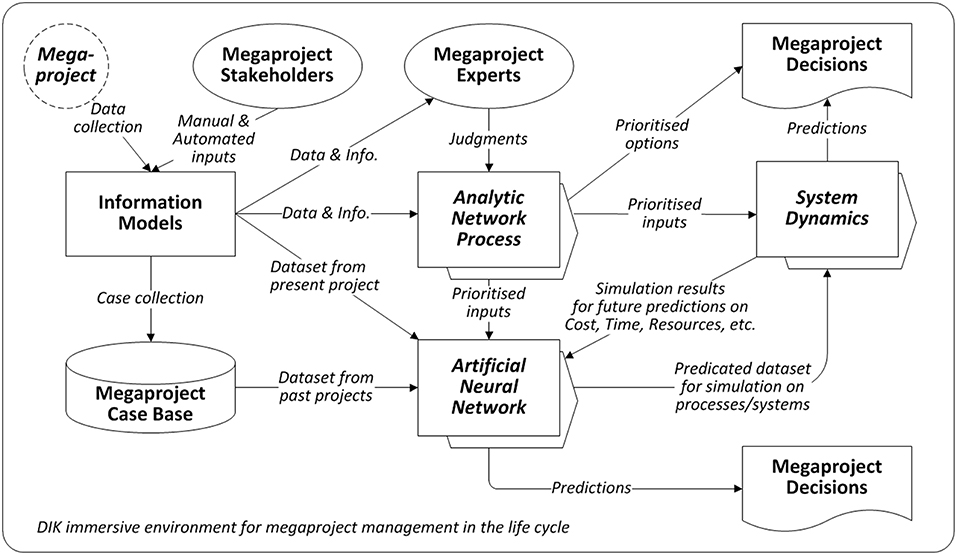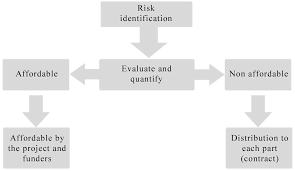Challenges and Risk Management in Megaprojects Construction
Need an Assignment Helper in the UK? Native Assignment Help is here to support you every step of the way. Our skilled experts specialize in a wide range of subjects and are committed to delivering high-quality assignments that meet the highest academic standards.
Introduction: Obstacles and Resource Needs in Ethiopian Megaproject Development
Megaprojects are distinguished by their magnitude, disproportionate resource needs, number of investors, social and environmental effects, and significant levels of interest among the general public. This research examines the obstacles faced by massive projects and the significance of risk management in this situation. In modern organizations, projects are becoming a popular form of work. Megaprojects have been powered despite the reality that doing so is crucial to their success. The real problems in construction management are risk management and examining the obstacles. The purpose of this is to identify hazards and determine how megaprojects are currently handling risks. Administrators can more easily locate dangers inside the megaproject thanks to the systematization of the risks, which also helps them move through the remaining steps of the risk management process. Additionally, managers can find it helpful to use the matrix designed for risk transfer to determine which partner would've been ideal for each risk. From such an academic point of view, potential options for fresh research approaches are also presented.
There are several problems regarding the construction of megaprojects in the social, and environmental in a significant state of society. The huge size and the longtime duration of the period created complexity and uncertainty in megaprojects. This research can able to attracts more researchers due to its pitfalls from various fields of management area of the project.
Discussion
Research Method
In this research, the literature review and the analysis is exhibited. In this, a primary review found that the studies of the mega projects covered the characteristic of the projects. Additionally, various approaches are used by researchers to observe and understand megaprojects with diverse areas of knowledge. This focuses on the common characteristics of the megatrends. The literature sources are unlimited. This is also derived with the help of other reliable reports, and books published in different articles.
Literature study
In reviewing most of the articles about the challenges in megaprojects, it varied different credibility as per various authors. This section of the research will be able to clarify the main issue and lead to developing an idea about risk management in the construction management of megaprojects.
According to authors Chatelier et al. 2022, in megaprojects risk constitution is the systematic process of identification. Responding and analyzing the risk. Throughout the projects, the cost-benefit impacts are taken into account. Huge investments, a greater incidence of unpredictability, intangible advantages, and spectacular long-term results are the characteristics that are most frequently seen in projects. There are several risk variables involved, which might result in project failure or delay (Chatelier et al. 2022).Establishing a strategy and approach for efficiently managing risk factors is crucial. It is essential to lower the likelihood that the risk factors. By the use of various models and the evaluation of mitigation. The researcher attempted to use a variety of aspects in the earlier investigation for this thesis to assure the advancement of construction management. Megaprojects like dams, cities and underground tunnels are all built using a methodical approach that tends to innovate the risk variables.
According to the author Maiti and Choi, 2021, there are lots of requirements for health and safety management in construction management. In the international market of energy, many countries play a vital role in producing megaprojects in various zones. The risks are characterized by the poor managerial performance of the management. In the absence of perfect leadership and stakeholder engagement, the risk and the uncertainty are discovered. There are some integration and coordination challenges in the megaprojects (Maiti and Choi, 2021). Megaprojects have several challenges compared with other types of projects not only for the large size, but the duration is also long, and impact on society and the environment. Due to the vulnerabilities with the involvement of stakeholders.
According to the author Damayantiet al. 2021, The adoption of untested equipment that results in cost and schedule overruns is the primary factor contributing to the poor megaproject performance linked with technical novelty. The design and development phases of the project are frequently extended due to the ambiguity around how to handle the latest tech. Mega-building projects have drawn more interest from academics researching construction management in recent years. Due to their size, timeframe, and considerable social and environmental impacts, as well as the security breaches decided to bring on by a large number of groups involved, the sophistication of their legal agreements, and their exposure to adjustments in the macroenvironment, managing mega building projects presents distinct management challenges even before being compared to other types of facilities (Damayanti et al. 2021). The majority of large-scale building projects have performance concerns, and their poor success rates are proof that conventional project oversight procedures are inadequate for managing the risks and complexities of such projects.
According to the author, Li et al. 2018, identified the main explanations for the performance problem,s of th projects on focusing strategic behaviour of rent-seeking. It can be denoted as the decision-making rationality, management of the project, and mechanisms of governance, culture of the project management. Some decision-makers tend to create biased predictions. It arise th questions about the performance of the megaprojects(Li et al. 2018). The estimations are unrealistic and are known as the pre-planners behaviour of opportunistic. Because of the significant upfront outlay made in the project, decision-makers are pulled past the point of no return. Additionally, the worry that they may be perceived as failures drives them to finish the assignment. Secondly, ‘expectancy theory’ helps comprehend the hazardous conduct of selection makers. They continue to spend in a failing enterprise, hoping to benefit greater in the future. Furthermore, self-justification theory explains project managers' propensity to continue with activities or plans that result in unsuccessful results. This idea states that project managers are likely to defend their choices by dismissing the criticism.

Figure 1: Megaproject management
Analysis
In modern organizations, projects are one of the popular forms of work. Megaprojects are basically known for their complexity, are vast in size, and lastly require a long time. Megaprojects are considered “large-scale investment projects”. Here, investment is done in a large amount and therefore, risks are involved in the projects. Such projects require excessive resources and include several stakeholders. Stakeholders play an important role in the implementation of mega projects and at the same time risks are involved (Nachbagauer and School, 2019). It has an impact on both the society and environment. Moreover, these projects involve risks in various aspects which includes environmental risks, regulatory risks, dependency risk, communicatory risks, and external risks.
- Environmental risk: Environmental risk has been identified as one of the elements in megaprojects over time. The extent and scope of environmental concerns associated with infrastructure projects have grown. Throughout a project, environmental concerns may persist to varying degrees and cause major delays. From pre-construction protests related to the environment or public interest to construction-related contamination or pipe discovery to post-construction operations and maintenance pollution(Saunders et al. 2018). Project managers need to take a more serious note of how serious environmental hazards are and take effective measures to not only comprehend but also manage them. There are some common types of environmental risks such as extreme weather might impact progress, ground conditions might not be fit for construction, etc.
- Regulatory risk: The use of standards in project management procedures is constantly expanding. Project leaders have a key obligation to execute and sustain compliance with rules since failure can have serious repercussions, including financial and legal penalties and do so can have serious repercussions, including financial and legal penalties as well as harm to one's image (Walsh and Walker, 2020 ). The quantity and significance of regulatory hazards are increasing in the modern day. Project managers need to develop a more involved way to maintain compliance throughout a mega-whole project's life cycle and keep ahead of any restrictions that could threaten to impede project execution.
- Dependency risk: Parts of the system in project management relate to the connection between tasks that come before and after another activity. The finish-to-start relationship is the most frequent relationship, where the predecessor's work must be completed before the following task may begin. In these dependent circumstances, a delay in one activity will probably affect all subsequent tasks, delaying the project as a whole. In some cases, this might also increase project costs since it could be necessary to raise more money to restart the project or fix the problem.
- Communicatory risks: Numerous organizations engaged in the building of megaprojects have a multi-layered organizational structure. A typical system involves communication between contractors and building managers, who would then submit to the project owner, who then speaks to the product owner, who then speaks to a business executive (Rickabyet al. 2018). Rarely is it possible to avoid the levels, and since major projects involve several contractors who each follow their specific plans, many dependencies make it difficult to present the whole picture. Contractor interfaces that are incompatible with project infrastructures, a lack of scheduled meeting time, etc. are examples of communication hazards.
- External risks: Regardless of how well-organized a project is, there will always be uncertainty and risk outside of project boundaries that represent a threat to the completion of each plan. These hazards are more challenging to anticipate and manage since they are external to the project team or organization (Saunders et al. 2018). Due to insufficient study of external hazards, external risks frequently catch project managers off guard. Examples of external threats include localized terrorism, conflict, and theft or property damage.
Importance of Risk management
Focusing on risk identification is important since it will help to increase the work's quality. The tremendous impact and high unpredictability inherent with megaprojects, which both make risk control a critical role in their success, highlight the significance of managing risk in these projects. Risk management is an important practice because it gives a firm the tools it requires to successfully detect and manage potential threats. The success of the initiatives will be addressed by evaluating the risk and preventing their failure. The examination of the risk is the most crucial phase within the risk management framework. Based on the risk, the solution can be evaluated and hence, improves the output of the projects. When danger is recognized, it is simple to minimize it. Identification of hazards is essential for effective risk management, especially early on, before the project idea is set. Managing the risk in the megaprojects will help to achieve the main objectives and therefore, can increase the success of the projects.

Figure 2: Importance of Risk management
Conclusion
So to conclude, the entire research is focused on the managing of mega projects with resolving and identifying the risk factors in construction management. The research evaluates the variety of risk factors that affect the process of megaprojects. It explores the challenges in the mega projects and elaborates on the new involvement of the components. The mitigation factor in the management of the construction is visualized here as per the requirements of the market. The relevant journals and the articles of different authors led to exploring the idea of construction management in issuing risk factors of any mega projects. In this research real problems in construction management are risk management or examining the obstacles. The purpose of this is to detect hazards and determine how well risks are being managed in large-scale projects. Administrators can more easily locate dangers inside the megaproject thanks to the systematization of the risks, which also helps them move through the remaining steps of the risk management process. Additionally, managers can find it helpful to use the matrix designed for risk transfer to determine which partner would be ideal for each risk. From an academic standpoint, potential options for fresh research approaches are also presented. This research led to the future implementation of the researcher for a detailed study of megaprojects and their related risk factors.
Reference list
Journals
Aiyetan, A.O. and Das, D.K., 2022. Factors and Strategies for Improving Construction Management on Sites in Mega-Projects in South Africa: An Explorative Survey. Infrastructures, 7(2), p.19.
Chatelier, C., Oyegoke, A.S., Ajayi, S. and Heathcote, J., 2022. “Megaprojects to Mega-Uncertainty” Is About Risk Management to Perform. In Climate Emergency–Managing, Building, and Delivering the Sustainable Development Goals (pp. 277-295). Springer, Cham.
Damayanti, R.W., Hartono, B. and Wijaya, A.R., 2021. Clarifying megaproject complexity in developing countries: A literature review and conceptual study. International Journal of Engineering Business Management, 13, p.18479790211027414.
Lehtonen, M., 2018. Evaluating megaprojects: From the ‘iron triangle to network mapping. Evaluation, 20(3), pp.278-295.
Li, Y., Hu, Y., Xia, B., Skitmore, M. and Li, H., 2018. Proactive behaviour-based system for controlling safety risks in urban highway construction megaprojects. Automation in Construction, 95, pp.118-128.
Maiti, S. and Choi, J.H., 2021. An evidence-based approach to health and safety management in megaprojects. International Journal of Construction Management, 21(10), pp.997-1010.
Nachbagauer, A.G. and Schirl-Boeck, I., 2019. Managing the unexpected in megaprojects: riding the waves of resilience. International Journal of Managing Projects in Business.
Nachbagauer, A.G. and Schirl-Boeck, I., 2019. Managing the unexpected in megaprojects: riding the waves of resilience. International Journal of Managing Projects in Business.
Rickaby, B., Krystallis, I. and Davies, A., 2018, December. Managing Uncertainty (opportunities and threats) in Megaprojects. International Research Network on Organizing by Projects (IRNOP).
Saunders, F.C. and Townsend, E.A., 2018. Delivering new nuclear projects: A megaprojects perspective. International Journal of Managing Projects in Business, 12(1), pp.144-160.
Shiferaw, A., 2022. Assessment of the Practices and Challenges of Implementing Earned Value Management System in Selected Ethiopian Megaprojects (Doctoral dissertation, ST. MARY’S UNIVERSITY).
Walsh, A. and Walker, P.A., 2020. Looking beyond time and cost influences in megaprojects. COBRA at Ares 2020 (Cancelled due to COVID-19).



